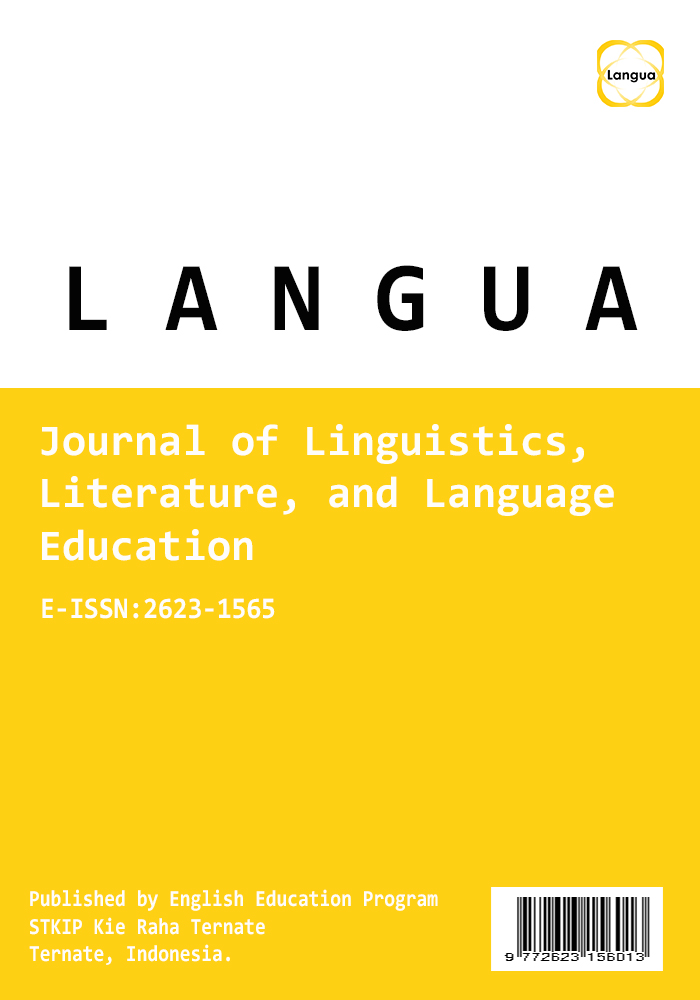Gender and Semantic Interpretation
Abstract
The views that gender and language are related each other has been reviewed from at least two different disciplines: sociolinguistics and psychology. From the first discipline, it has been concluded that gender and language has no natural relationship for it is cultural values that shape genderlect. From the second discipline, it has been concluded that gender and language has natural relationship for different gender has different brain architecture. However, still, these views tend to focus more on the language production. Viewed from language comprehension, specified to semantic interpretation, this research involved 60 participants (30 males and 30 females) randomly taken from various affiliations with age ranged from 18-32 years old. 30 questions concerning semantic interpretation which are divided into entailment, presupposition, and basic syllogism are given. The result confirms various theories about ‘gendered-brain’ especially lateralization theory. This research has concluded that there is a natural relationship between gender and semantic interpretation.
Downloads
References
Cook, N. D. (2010). Bihemispheric Language: How the Two Hemispheres Collaborate in the Processing of Language. Proceedings of the British Academy, 106, pp.169-194.
Gamut, L. T. F. (1991). Logic, Language, and Meaning. The University of Chicago Press.
Griffiths, P. (2006). An Introduction to English Semantics and Pragmatics. Edinburgh University Press.
Hatch, E. & Farhady, H. (1982). Research Design and Statistics for Applied Linguistics. Newbury House Publishers, Inc.
Helgeson, V. S. (2012). The Psychology of Gender (Fourth Edition). Pearson.
Knaap, L.J. Van der (2010). The Corpus Callosum and Brain Hemisphere Communication. Unpublished article in Utrecht University.
Naples, N. A. (Ed). (2016). The Wiley Blackwell Encyclopedia of Gender and Sexuality Studies. John Wiley & Sons, Ltd.
Poespoprodjo, W. (1991). Logika Scientifika: Pengantar Dialektika dan Ilmu. Rosda.
Riemer, N. (2010). Introducing Semantics. Cambridge University Press.
Robson, M. & Stocwell, P. (2005). Language in Theory: A Resource Book for Students. Routledge.
Rogers, W.S. & Rogers, R. S. (2001). The Psychology of Gender and Sexuality: An Introduction. Open University Press.
Sapir, E. (1921). Language: An Introduction to the Study of Speech. Foreign Language Teaching and Research Press.
Stapleton, P. & Shao, Q. (2017). Research in Language Teaching over Two Decades: A Retrospective of the first volume of Language Teaching Research. Language Teaching Research, Vol.22, Issue 3, pp.350-369.
Uddin, S. (2018). Brain Chemistry and Sex Differences: Are Male and Female Brains Really Varied? Journal of Neuroscience and Neuropharmacology, Vol. 4, Issue 1.
Wittgenstein, L. (2001). Tractatus Logico-Philosophicus: English Translation by D. F. Pears and B. F. McGuinness. Routledge, London & New York.
Zaidi, Z. F. (2010). Gender Differences in Human Brain: A Review. The Open Anatomy Journal, Issue 2, pp.37-55.
Zevy, D. & Cohen, A. (2016). Hemispheric Lateralization of Theory of Mind. Western Undergraduate Psychology Journal, 4(1).
Copyright (c) 2019 Z Zainurrahman

This work is licensed under a Creative Commons Attribution 4.0 International License.
Authors who publish with Langua Journal of Linguistics, Literature, and Language Education agree to the following terms:
- Authors retain copyright and grant the journal right of first publication with the work simultaneously licensed under a Creative Commons Attribution License that allows others to share the work with an acknowledgement of the work's authorship and initial publication in Langua.
- Authors are able to enter into separate, additional contractual arrangements for the non-exclusive distribution of the journal's published version of the work (e.g., post it to an institutional repository or publish it in a book), with an acknowledgement of its initial publication in Langua.
- Authors are permitted and encouraged to post their work online (e.g., in institutional repositories or on their website) prior to and during the submission process, as it can lead to productive exchanges, as well as earlier and greater citation of published work.






